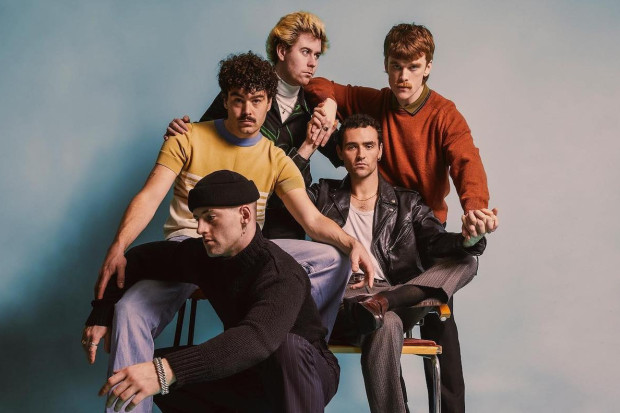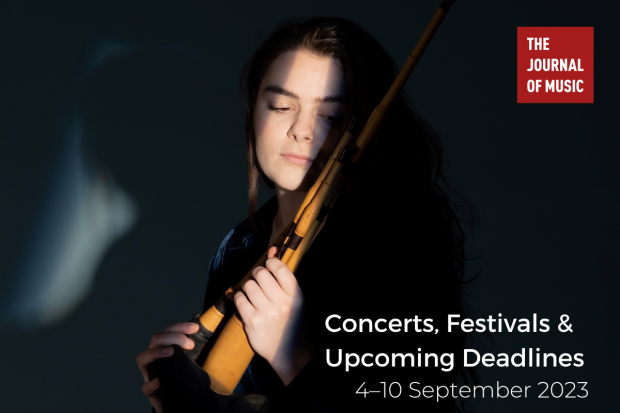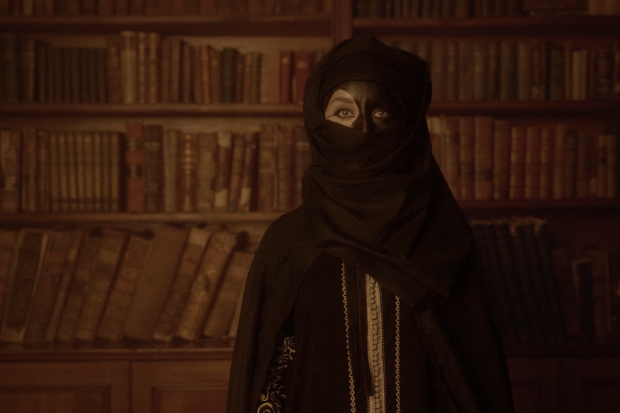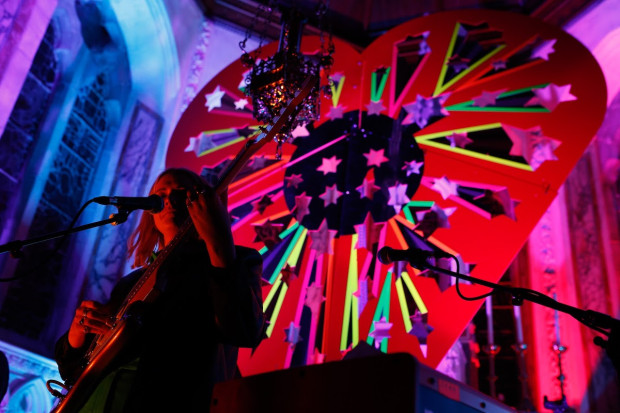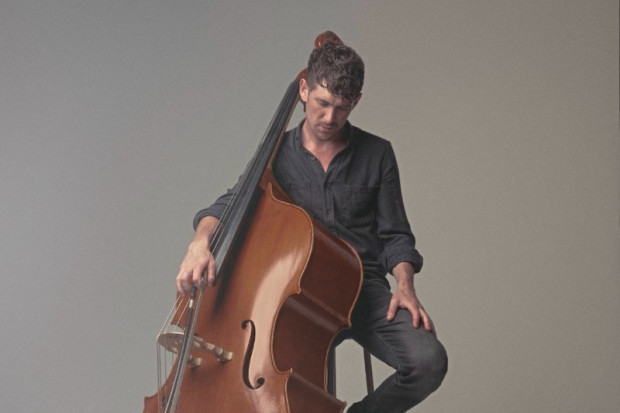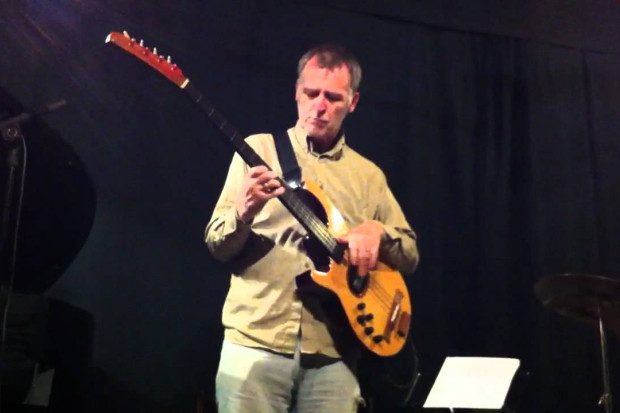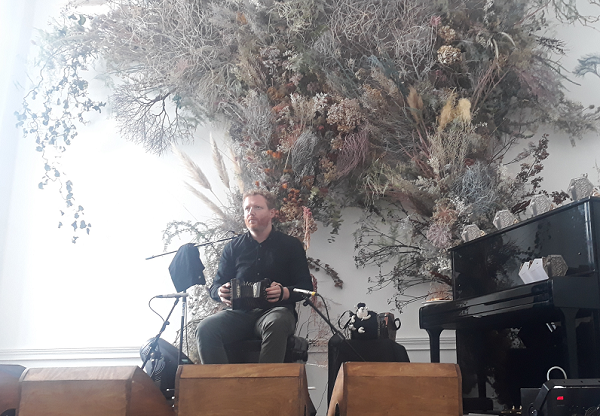
Cormac Begley
Musical Love
A different type of love story took place in Meath last weekend. Not the kind we’re used to hearing about on a certain island, but something more fleeting and one that came with tents, camping, hot tubs and Korean food. The sixth Another Love Story festival ran from 16 to 18 August and featured a line-up of mostly Irish acts and a few international musicians, and an ancillary itinerary of talks, film screenings and book-binding workshops. Art installations hung in corners and trees, and the eleven stages and venues came in the form of tents, outdoor stages, rooms in the country Killyon Manor and tiny hidden areas buried in the woods, well away from the main happenings. The ethos of the festival, ‘Love Wins Out’, is visible throughout on signage and on the printed programme. But did the festival win our hearts?
On Friday, it struck me that I already had my tent up before I went to collect my wristband. There seemed to be an element of trust between the organisers and attendees. Security people were present, and checking during the weekend, but they weren’t heavily policing as can be seen at other festivals. The small size of the event, and perhaps the particular crowd, made this possible.

(Photo: Ste Murray)
The artificiality of electronica
On night one, instrumental rock band The Redneck Manifesto played to a bustling and growing crowd at Further Afield, the biggest stage by a considerable amount. The stage was a canvas and wooden semi-spherical shape, with a backdrop of trees, and a canopy of glass lights overhead that looked like glowing jam jars. Energy was flowing between the band and the crowd; their progressive, melodic and upbeat instrumental rock was the perfect combination to start the weekend. A highlight from their set included up-tempo ‘Djin Chin’, with synth, combining looping guitar motifs, distortion and the artificiality of electronica.

The Redneck Manifesto (Photo: Steve Battle)
What followed was ‘I am Brazil’, a song inspired by the 2002 world cup. The piece’s steady rhythm repeats throughout its five minutes or so, with repetitive loops on guitar, moved between soft and atmospheric to heavy. The set – the last with drummer Mervyn Craig who is leaving the band – catered to both Manifesto fans at the front, and the interested stragglers at the back, listening, bopping and chatting under the moonlight.
In the sun
The sun drenched the festival site in warmth and light on Saturday. Crowds of people gathered on the grass at Further Afield (the stage was perfectly curated with the delicate festival-goer in mind) and commenced with guitar and cello duo Lemoncello (Laura Quirke and Claire Kinsella), who blend folk, classical and indie, and voices singing in harmony.
Songwriter Anna Mieke followed, playing a selection of stringed instruments, with her band on fiddle, guitar, clarinet and drums. The last time I saw her perform was at the It Takes a Village festival in an indoor function room, and, although her performance was memorable, at Another Love Story, in the sun and with a much bigger crowd, her talents really shone.
From her recent album Idle Mind, Mieke played songs such as the gentle lullaby-like ‘Warped Window’, featuring mostly vocal and guitar, and the title track, as well as the Appalachian folk song ‘Three Little Babes’, demonstrating that the American folk tradition continues to be an influence on her songwriting and performance. Mieke’s show was full-bodied at times, with multiple layers of instrumentation and harmonies, and then gentle and alluring, with her soft yet projected vocals. With such a charming performance from Mieke, I was hopeful for what the rest of the day would hold.
Another of the festival’s venues was the Ballroom – a substantial space in the manor with high ceilings, decorated with a spinning disco ball and what looked like a hand-crafted, large-scale backdrop on stage, made with leaves, branches and flowers, painted in various shades of pastel greens, pinks, purples and browns. The Ballroom was where I had spent the early hours of Saturday morning – getting my steps in for the day while dancing to a DJ set– and on Saturday afternoon, I returned for Dowry.

Anna Mieke
Fragmented sounds
With violin and an array of pedals, Dowry quietly acknowledged the audience and started playing fragmented melodies, her instrument held in the way that one would hold a guitar. The phrases were played through her looping pedals while she played alternating notes, creating a polyphony with violin and pedal. Unfortunately, a loud DJ set at the nearby Lawn stage bled in through the windows and interfered with Dowry’s soft and subtle set. Perhaps it wasn’t as much of an issue for those not as close to the nearby stage, but it meant I didn’t get to appreciate her as much as I would have liked.
Still sunny and packed with people, the Further Afield stage later hosted Glasshouse ensemble, a large Dublin-based group of musicians with strings, brass, percussion and a choir of voices singing in harmony, including Wyvern Lingo’s Caoimhe Barry. Glasshouse played the music of Bon Iver, with songs such as ‘Holocene’ and ‘Skinny Love’. However, after a lengthy sound check, something still didn’t sound right with their set. The vocals weren’t quite loud enough against the instrumentation and some of the songs fell a little flat and lost my attention. I think Glasshouse would be better suited to an indoor concert, with acoustics to allow each part of the group to be heard properly and fully enjoyed. Sets like this are almost always a risk with festivals and outdoor gigs. While the sonic experience wasn’t the best I’d ever experienced, Glasshouse’s concept of performing Bon Iver’s music with a full band is one that I’d love to see again.

The Ballroom (Photo: Ste Murray)
Fifteen performances
I saw about fifteen performances over the two days, including the seamless jazz improv that is Sean Carpio and Cian Nugent, indie-folk songwriter Ailbhe Reddy, the liveliest set of the whole weekend from dance-medley full band Attention Bébé, and the ever-striking electronic artist and singer Ae Mak. I also saw a Cian Ó Cíobháin DJ set in one of the festival’s smallest venues – the Shift Shack, a small stone shed attached to the manor – the brash punk that is Galway’s Oh Boland and the ambient Sun Collective, who blend jazz, classical and indie, but for me, while their songs are tastefully arranged, their set lacked variety. The last concert of the weekend for me was folk songwriter and guitarist Junior Brother, performing in a venue much too small, as the crowd crammed in and sat on the floor, almost too close to him.

Junior Brother (Photo: Zoë Holman)
Part performance, part history lesson
My favourite of the weekend though has to be the Sunday afternoon session with concertina player Cormac Begley. The Kerry musician is one of Ireland’s most prominent traditional artists within the current scene, but this was my first time seeing him perform.
I sat on the floor close to the stage in the Ballroom as Begley set up. People filled the room, jammed in, many standing at the back or looking through the windows. The performance was recorded live and streamed on a screen outside to allow more people to watch. Begley’s forty-five minute set was part performance and part history lesson as he taught us about his beloved instrument. He actually brought seven concertinas with him and told us the story behind each.
His bass concertina, for example, is one of only six in the world and has a much wider range than the standard instrument, or, as Begley put it, it’s ‘like the regular concertina, on steroids’. His dry sense of humour kept us laughing between each set, while the room was full of smiling faces, hooked on every note he played and moving to the rhythm.
He played a set of polkas that he learned from his concertina-playing uncle Tommy O’Connor; he told of the war history behind ‘O’Neill’s March’, the tune many will know from the Horslip’s ‘Dearg Doom’; and he played a tune he wrote, inspired by the Māori war dance, the haka. Performed on the bass concertina, the urgency in the haka is mirrored in his playing, with abrupt movements and an aggressive approach.
Throughout his concert, a small woollen toy sheep sat perched on the bench beside Begley which he finally acknowledged towards the end of his set. ‘Morris’ was picked up to reveal a small box, with an even smaller concertina inside. Played originally by circus clowns – ‘not much has changed’, he says – he played one tune on it, which, due to its size, meant he had to carefully finger the buttons, with laughter between him and the crowd. It resulted in a standing ovation from the Ballroom, with cheering, laughing, clapping.

Crowd in the Ballroom (Photo: Steve Battle)
Curated with care
I’ve had my fair share of festival experiences over the past number of years. I’ve attended, volunteered at, and worked with festivals, and so the concept of an array of music, art, drunk people and over-priced food in a field is nothing new to me. Over the past while, however, the festival obsession has faded and I’ve chosen my escapades more carefully, perhaps due to the number I’ve attended over the years, but also due to the saturation of festivals in Ireland. However, Another Love Story has created something unique, a weekend worth attending.
The music offerings were varied and curated with care and it’s clear that the organisers are in the business of creating exceptional experiences. From the beautiful and professional level of art, to the care taken in keeping the festival site clean and eco-conscious, to the biggest takeaway of the weekend – the genuinely friendly crew and crowd – our hearts were won by Another Love Story.
Published on 22 August 2019
Shannon McNamee is Assistant Editor of the Journal of Music.











